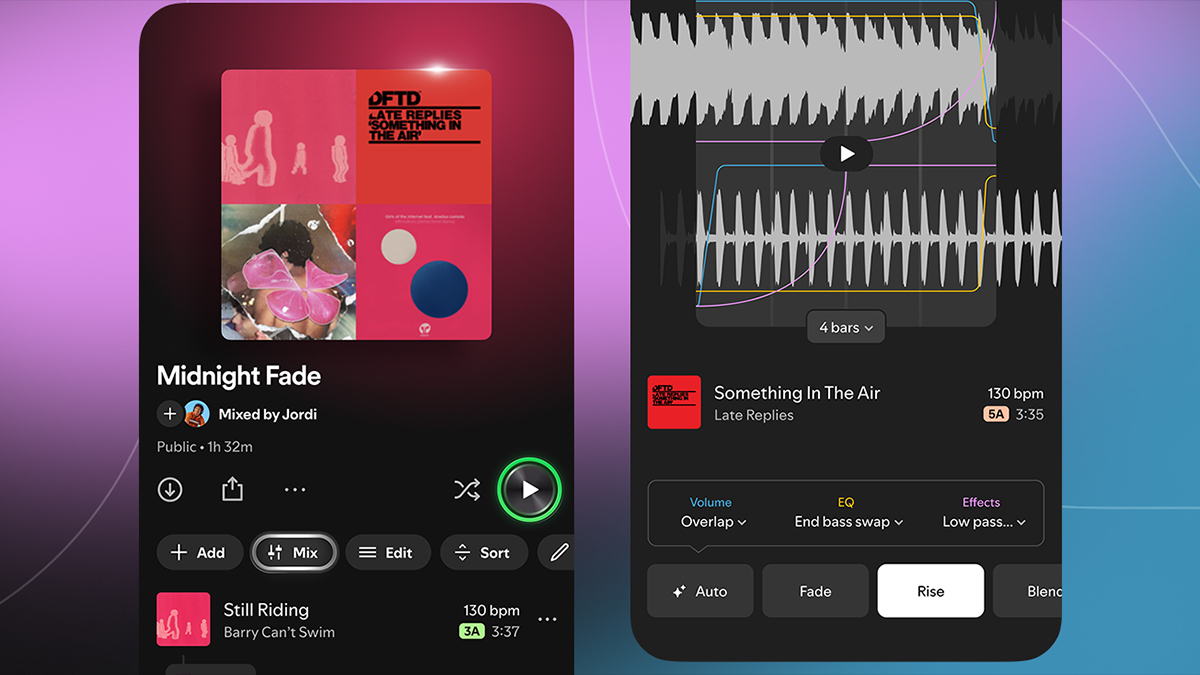Spotify responds to Apple Music’s new AutoMix feature by letting you turn your playlists into ready-made DJ sets with “seamless transitions”
You now have BPM and key information for all your playlist tracks, too

Spotify and Apple Music have fought it out on multiple fronts down the years - sound quality, usefulness of recommendations, compatibility, etc - and it seems that the latest battleground is in-app mixing capabilities.
Both services have had simple automatic crossfading for some time, but as part of iOS 26 - coming this autumn - Apple is introducing AutoMix, a new feature that promises to “mix one song into the next, just like a DJ.” Already available to those using the iOS 26 beta, this is said to use AI to analyse the audio characteristics of songs so that it can create “unique transitions” involving both timestretching and beatmatching.
Not to be outdone, Spotify has hit back with its own Mix feature, which initial reports suggest could be even more sophisticated. As well as being able to use it to create unique transitions automatically, you can also customise the transitions with various presets (Fade or Rise, for example) and adjust volume, EQ and effect settings.
You can even view waveform and beat data - both key and BPM information is shown for songs in Mix playlists so you can easily find songs that will ‘fit’ together - and adjust the transition point so that you start to switch from one track to the next at the perfect moment.
While licensing restrictions mean that you can’t DJ with streamed music in public, mixed playlists could be a great option for house parties or for runners, who want to keep a consistent BPM going with no gaps. Obviously, you’ll get the best results if you choose songs that have locked-in tempos and beats, but it’ll be interesting to find out how the technology handles more complex mixing challenges, too.
There’s also a social aspect to all of this: your finished mixes can be shared with others, and you can collaborate on playlists with other Spotify users.
There are a couple of caveats - you’ll need to be a Spotify Premium user if you want to use the playlist mixing, and the feature is still in the process of rolling out so not immediately available to everyone (us included, at the time of writing).
Want all the hottest music and gear news, reviews, deals, features and more, direct to your inbox? Sign up here.
What’s more, although automatic playlist mixing is new in Spotify itself, something similar was available via a third-party app - Serato’s much-missed Pyro - as long ago as 2016. However, Spotify pulled compatibility with this and all other Djing software that it had partnerships with (Algoriddim’s djay, for example) in 2020.
Prior to Spotify launching its own automatic mixing feature, it was rumoured last year that it was working on a set of built-in remixing tools.

I’m the Deputy Editor of MusicRadar, having worked on the site since its launch in 2007. I previously spent eight years working on our sister magazine, Computer Music. I’ve been playing the piano, gigging in bands and failing to finish tracks at home for more than 30 years, 24 of which I’ve also spent writing about music and the ever-changing technology used to make it.
You must confirm your public display name before commenting
Please logout and then login again, you will then be prompted to enter your display name.